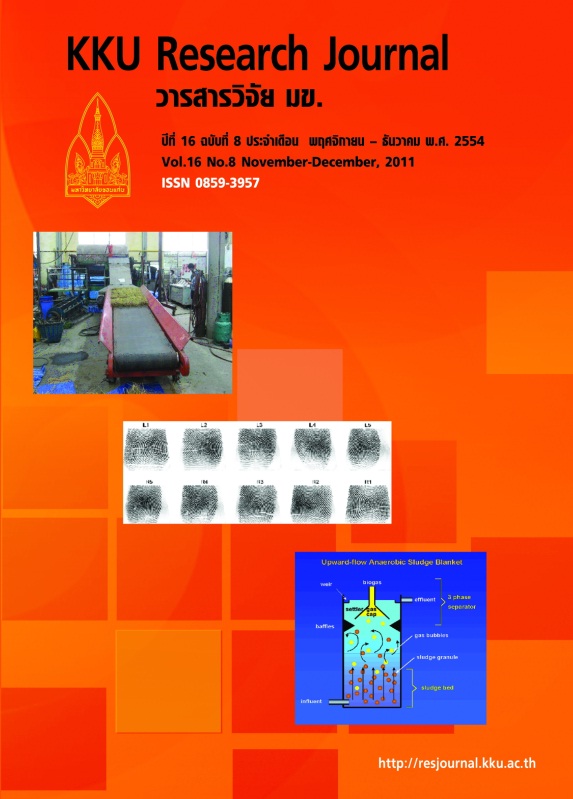Improvement of vitamin b6 production from rhizobium sp. 6-1c1 by random mutation
Main Article Content
Abstract
Rhizobium sp. 6-1C1, vitamin B6 producing bacterium was subjected to mutagenesis by gamma irradiation, ethyl methanesulfonate (EMS) and ethidium bromide (EtBr). To screen for various forms of produced vitamin B6 and thermotolerant mutants, optimized chemical mutagen and gamma irradiation mutants were grown at 50?C. Amount of vitamin B6 was determined by agar diffusion assay. Only mutants treated by gamma irradiation were able to grow at 50?C. Based on amount of vitamin B6 production and their morphological features, 10 mutants were selected from 689 mutant isolates. For mutant stability, ten selected mutants were stable both 37 and 50?C for vitamin B6 production for a studied period (10 generations). Two isolates (08-361 and 10-94) and isolate 10-8 showed significantly (p < 0.05) higher amount of vitamin B6 than wild type at 37 and 50?C, respectively. Reverse phase HPLC analysis showed that the forms of vitamin B6 produced mutants were pyridoxamine 5’-phosphate (PMP) pyridoxamine (PM) and pyridoxal 5’-phosphate (PLP) in culture media. This characteristic makes these mutants good candidates for potential biotechnological and biocatalytic applications.
Article Details
How to Cite
Chitchanok, A., Rattasaritt, P., Suthatip, S., Suphaporn, P., Nattayana, P., & Yanee, T. (2017). Improvement of vitamin b6 production from rhizobium sp. 6-1c1 by random mutation. Asia-Pacific Journal of Science and Technology, 16(8), 911–918. retrieved from https://so01.tci-thaijo.org/index.php/APST/article/view/83613
Section
Research Articles


